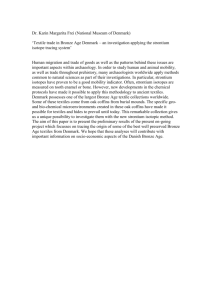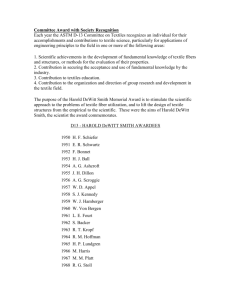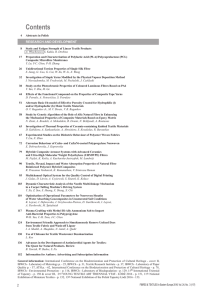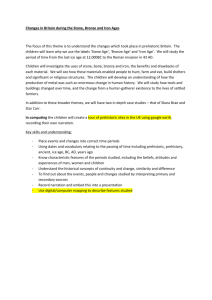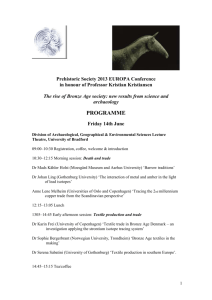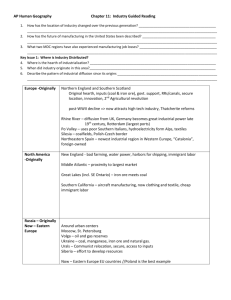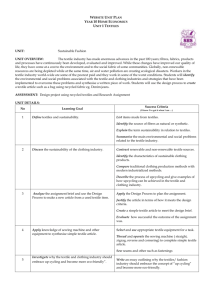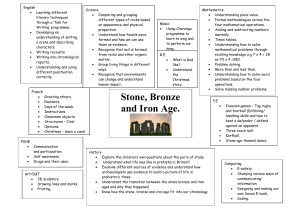Bronze Age Textiles in the making
advertisement
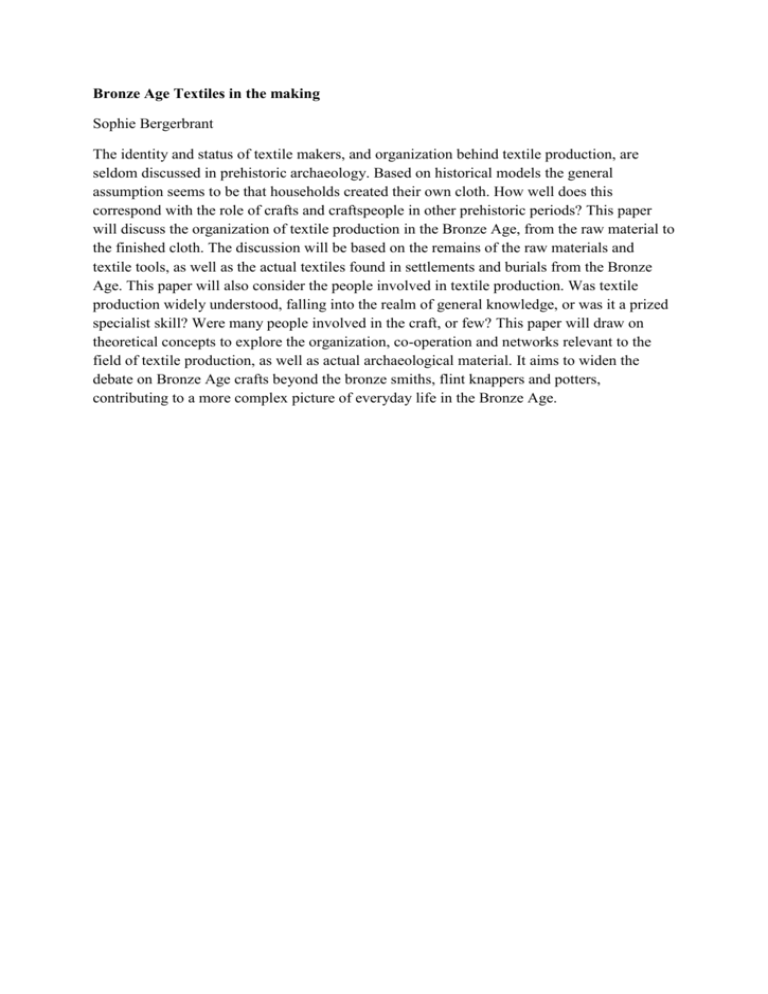
Bronze Age Textiles in the making Sophie Bergerbrant The identity and status of textile makers, and organization behind textile production, are seldom discussed in prehistoric archaeology. Based on historical models the general assumption seems to be that households created their own cloth. How well does this correspond with the role of crafts and craftspeople in other prehistoric periods? This paper will discuss the organization of textile production in the Bronze Age, from the raw material to the finished cloth. The discussion will be based on the remains of the raw materials and textile tools, as well as the actual textiles found in settlements and burials from the Bronze Age. This paper will also consider the people involved in textile production. Was textile production widely understood, falling into the realm of general knowledge, or was it a prized specialist skill? Were many people involved in the craft, or few? This paper will draw on theoretical concepts to explore the organization, co-operation and networks relevant to the field of textile production, as well as actual archaeological material. It aims to widen the debate on Bronze Age crafts beyond the bronze smiths, flint knappers and potters, contributing to a more complex picture of everyday life in the Bronze Age.


